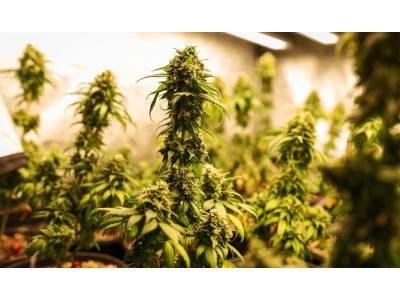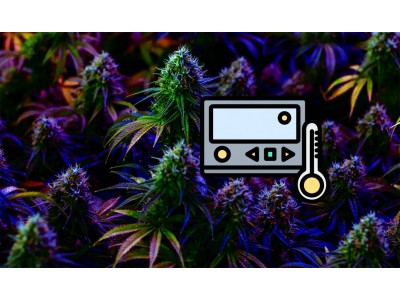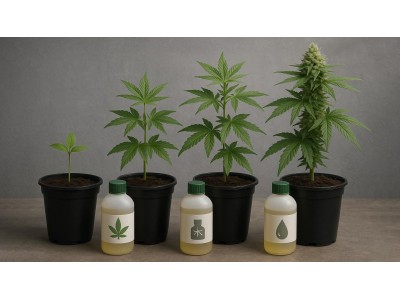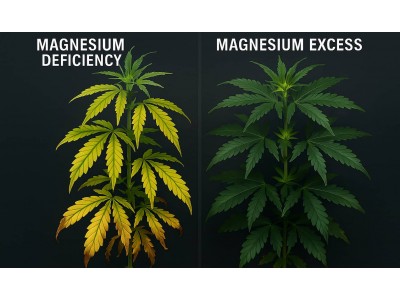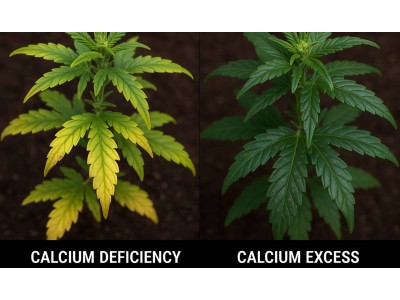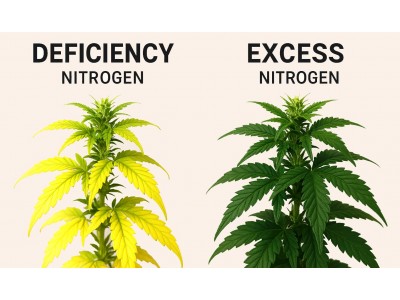0.00€
CheckoutCannabis growing: iron deficiency and excess
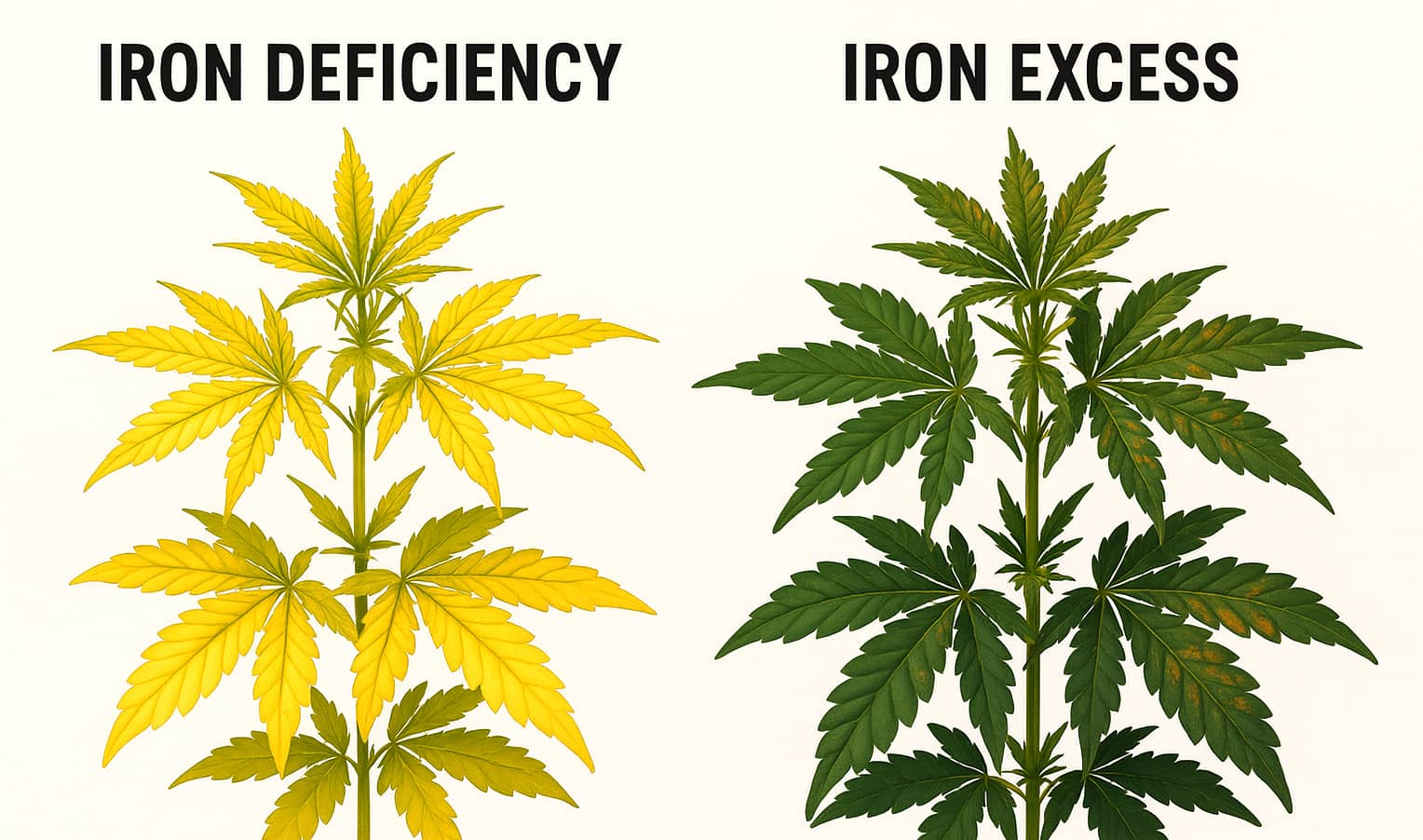
Iron is one of the most important micronutrients for cannabis cultivation, participating in key processes such as photosynthesis, chlorophyll formation, and the plant’s resistance to environmental stress. While iron is not a direct component of chlorophyll, it influences leaf color, respiration, and is essential for enzyme production. Let’s take a closer look.
Iron in the cannabis plant
Cannabis absorbs iron in the form of the ferric ion (Fe++) or in organic form. In soil, iron is often present in forms that are difficult to absorb, so plants use various mechanisms to take it up — such as chelation, where beneficial bacteria make iron more available, and by releasing root exudates that lower soil pH around the root zone. Young roots are particularly efficient at absorbing iron, making a healthy root system critical for proper nutrition.
To improve iron availability, various chelates are used — special compounds that stabilize iron ions, preventing oxidation and precipitation. The three most common types are:
- Fe-EDTA — works best at pH below 6.0 but loses effectiveness above pH 6.5;
- Fe-DTPA — stable at neutral pH around 7 and not displaced by calcium;
- Fe-EDDHA — remains effective up to pH 11.0 but is the most expensive option.
Chelates can compete with other elements such as calcium and magnesium, affecting iron uptake.
Signs of iron deficiency in cannabis
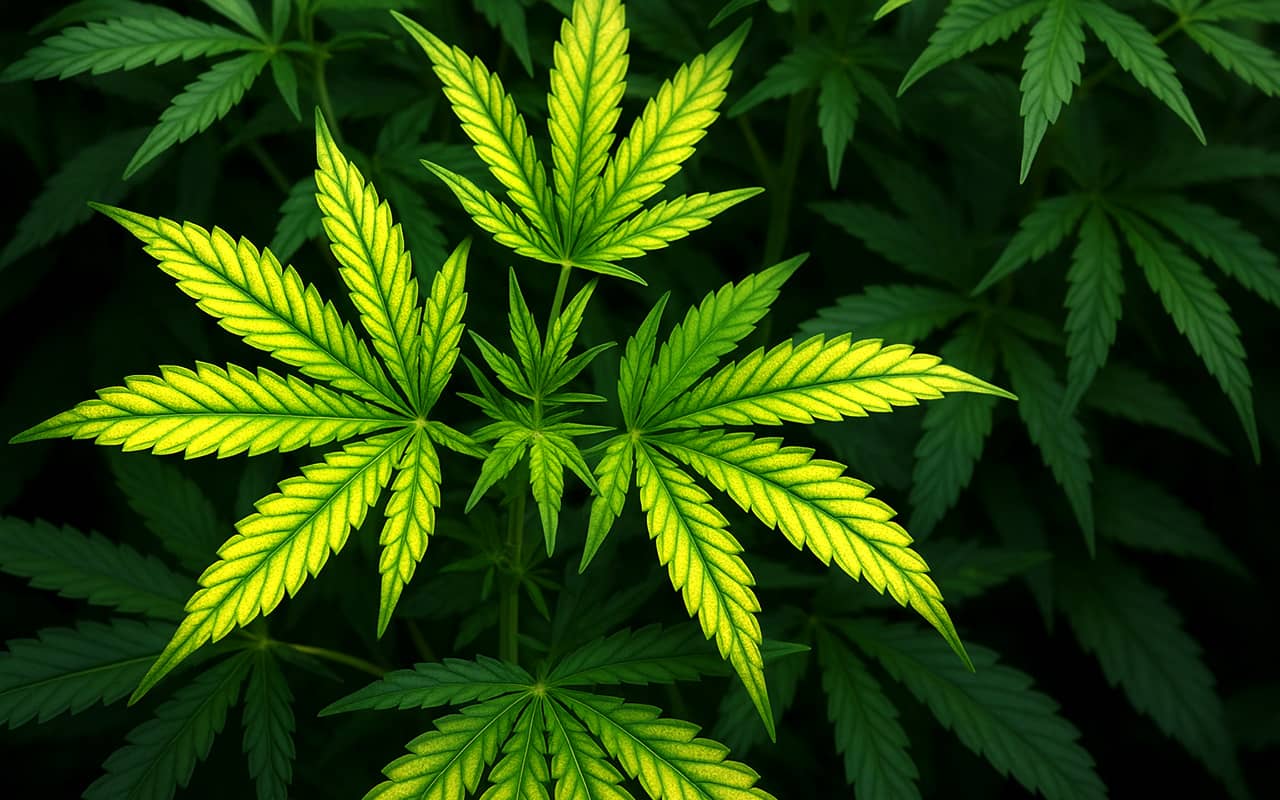
Deficiency most often occurs when soil pH exceeds 7.0, making uptake more difficult. High alkalinity, excess carbonates, high salinity, constant moisture, low temperatures, or excess levels of other micronutrients (manganese, copper, zinc) can also trigger deficiency. Typical symptoms include chlorosis — yellowing of young upper leaves while veins remain green.
Leaves gradually pale, growth slows, signaling nutrient issues. Causes include not only low iron levels but also immobilization due to excess calcium or bicarbonates, as well as microbial activity converting iron into unavailable forms. A weak root system caused by poor drainage, low temperatures, or oxygen deficiency also reduces uptake.
How to fix iron deficiency
Lowering soil alkalinity is key — use sulfur, organic fertilizers, and compost, as well as acidic fertilizers to help reduce pH. Iron chelates are the fastest way to correct deficiency, as they are efficiently absorbed at optimal pH ranges. For mild deficiencies, foliar sprays with iron sulfate can be effective.
Iron excess: symptoms and consequences
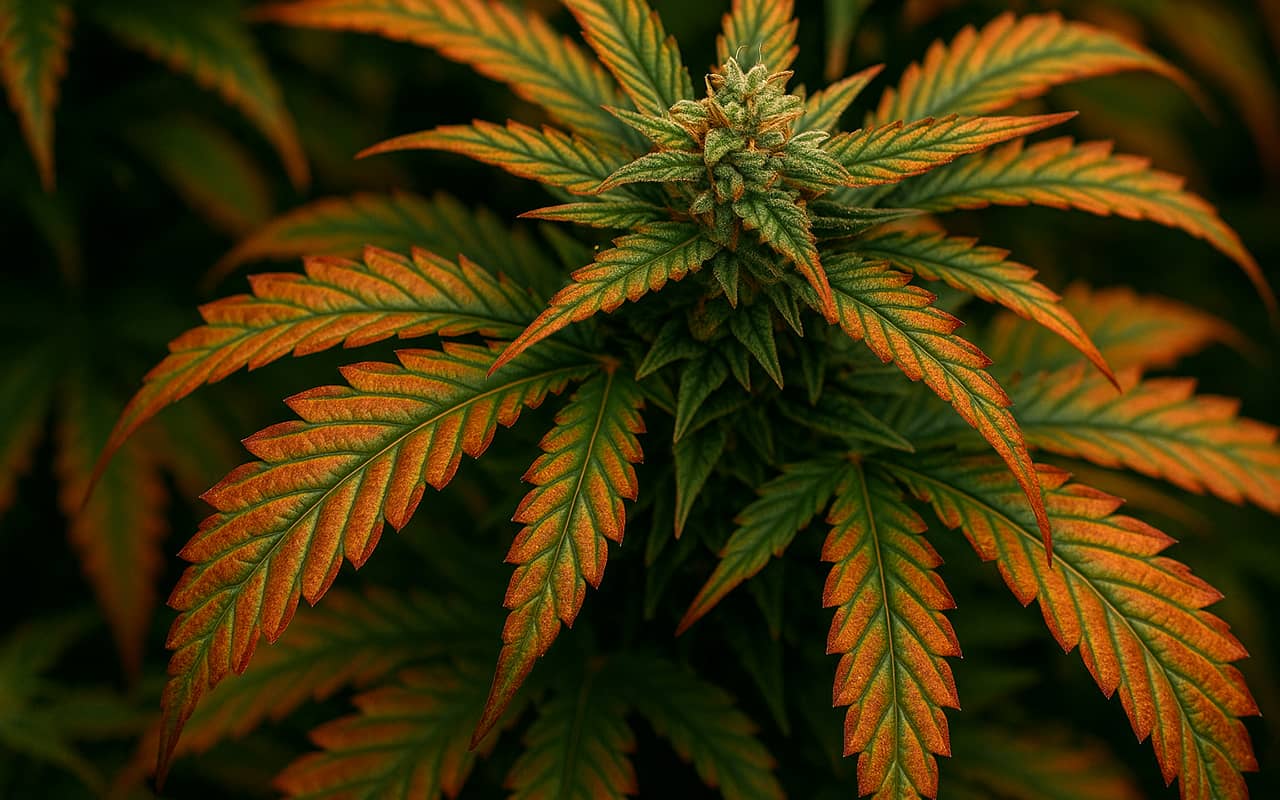
Too much iron is also harmful and may cause leaf yellowing, especially between veins, resembling chlorosis. Excess iron damages roots, reducing their ability to absorb water and nutrients, slowing growth. Brown or red spots may appear, and plants become more susceptible to pests and diseases.
To avoid this, monitor fertilizer dosages and, at the first sign of excess, flush the roots with enzyme products and abundant watering, then switch to lighter fertilizers with a suitable pH for the plant’s growth stage.
Conclusion
Maintaining iron balance in plant nutrition when growing cannabis seeds is the key to healthy plants and a good cannabis harvest. Regular monitoring and timely nutrient adjustments will help prevent both deficiencies and excess, ensuring optimal plant development.

